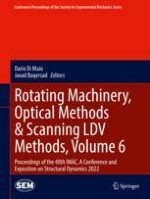2023 | OriginalPaper | Chapter
8. Digital Image Correlation with a Neuromorphic Event-Based Imager
Authors : Peter Meyerhofer, Andre Green, Alessandro Cattaneo, David Mascareñas
Published in: Rotating Machinery, Optical Methods & Scanning LDV Methods, Volume 6
Publisher: Springer International Publishing
Activate our intelligent search to find suitable subject content or patents.
Select sections of text to find matching patents with Artificial Intelligence. powered by
Select sections of text to find additional relevant content using AI-assisted search. powered by
